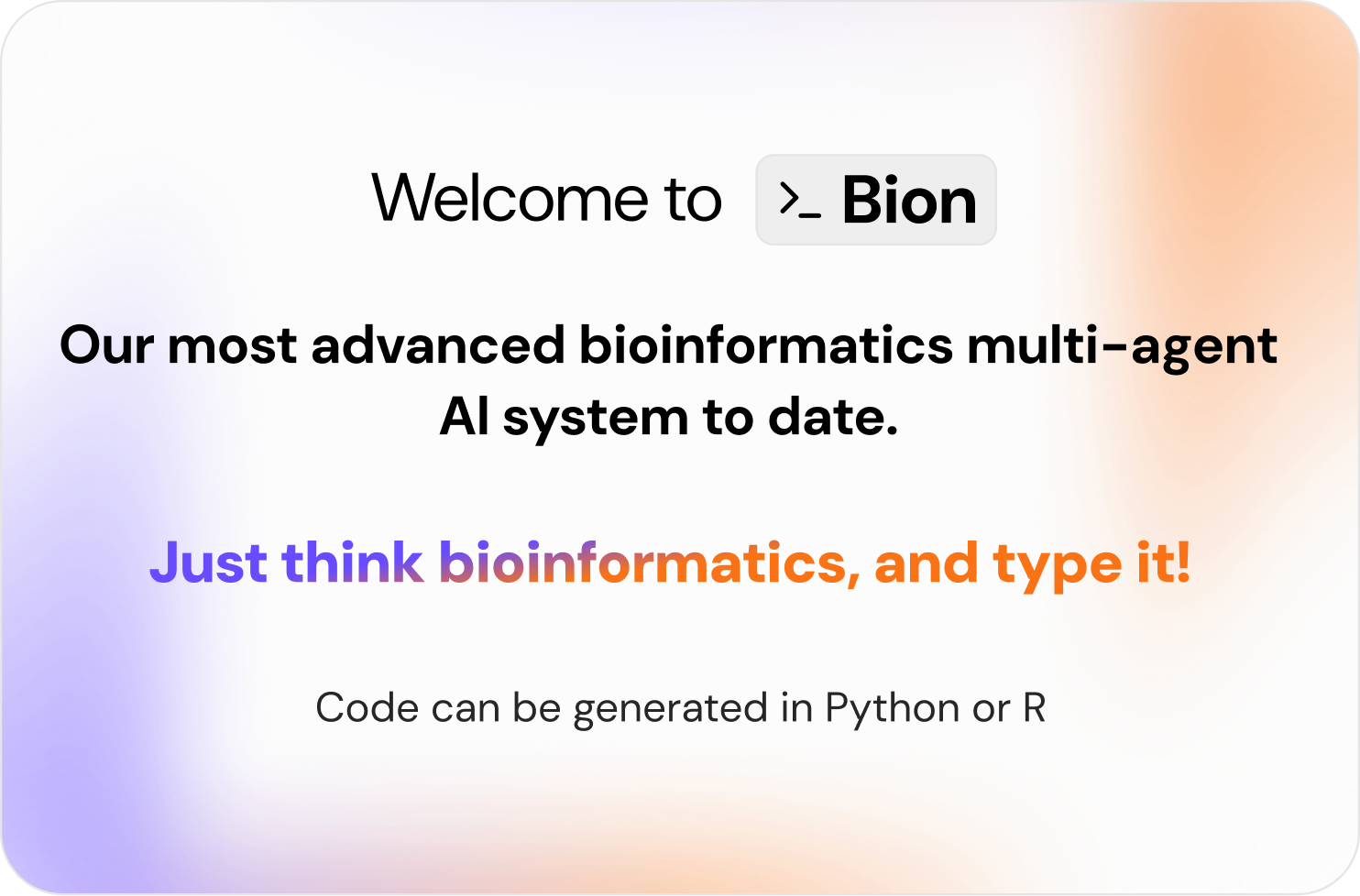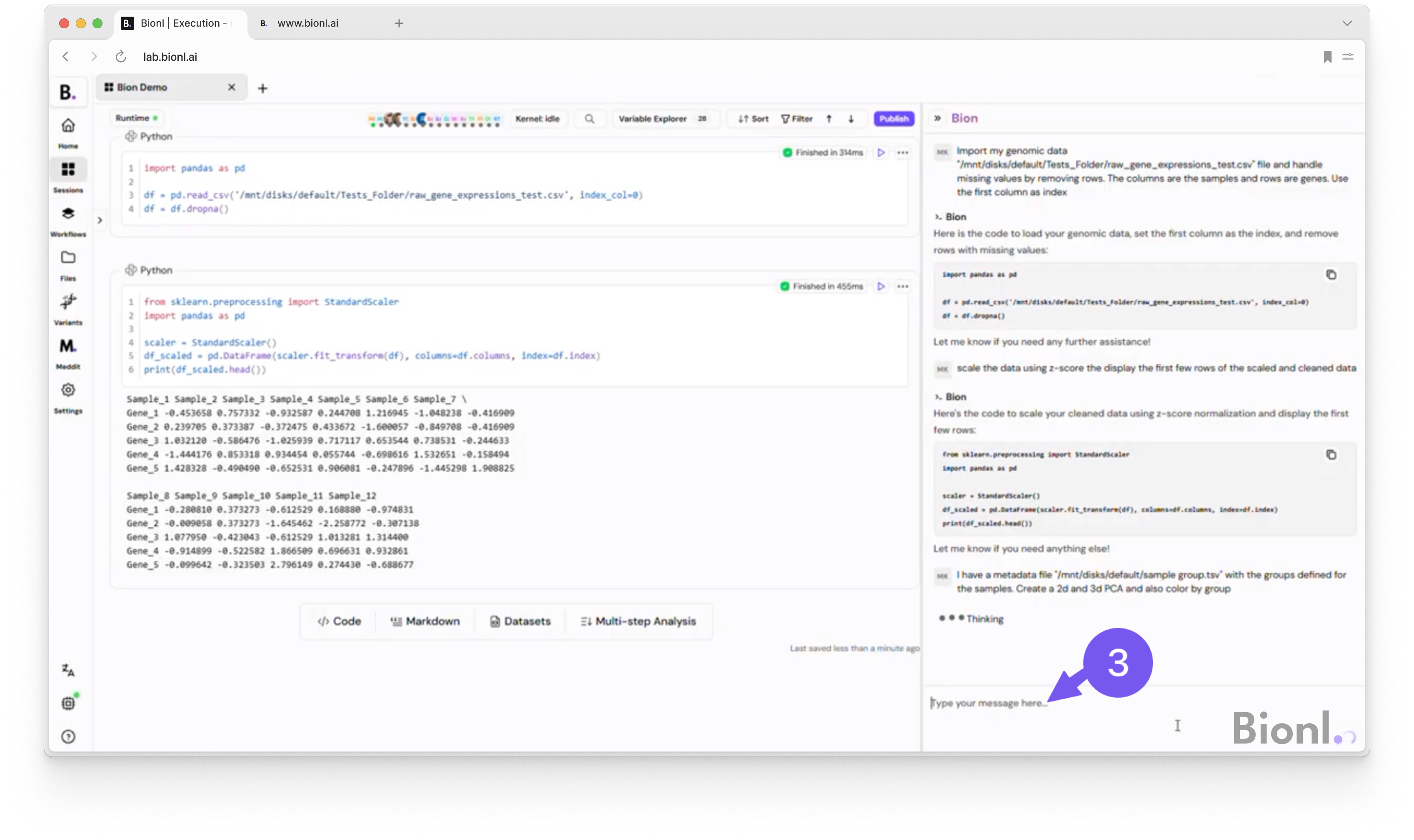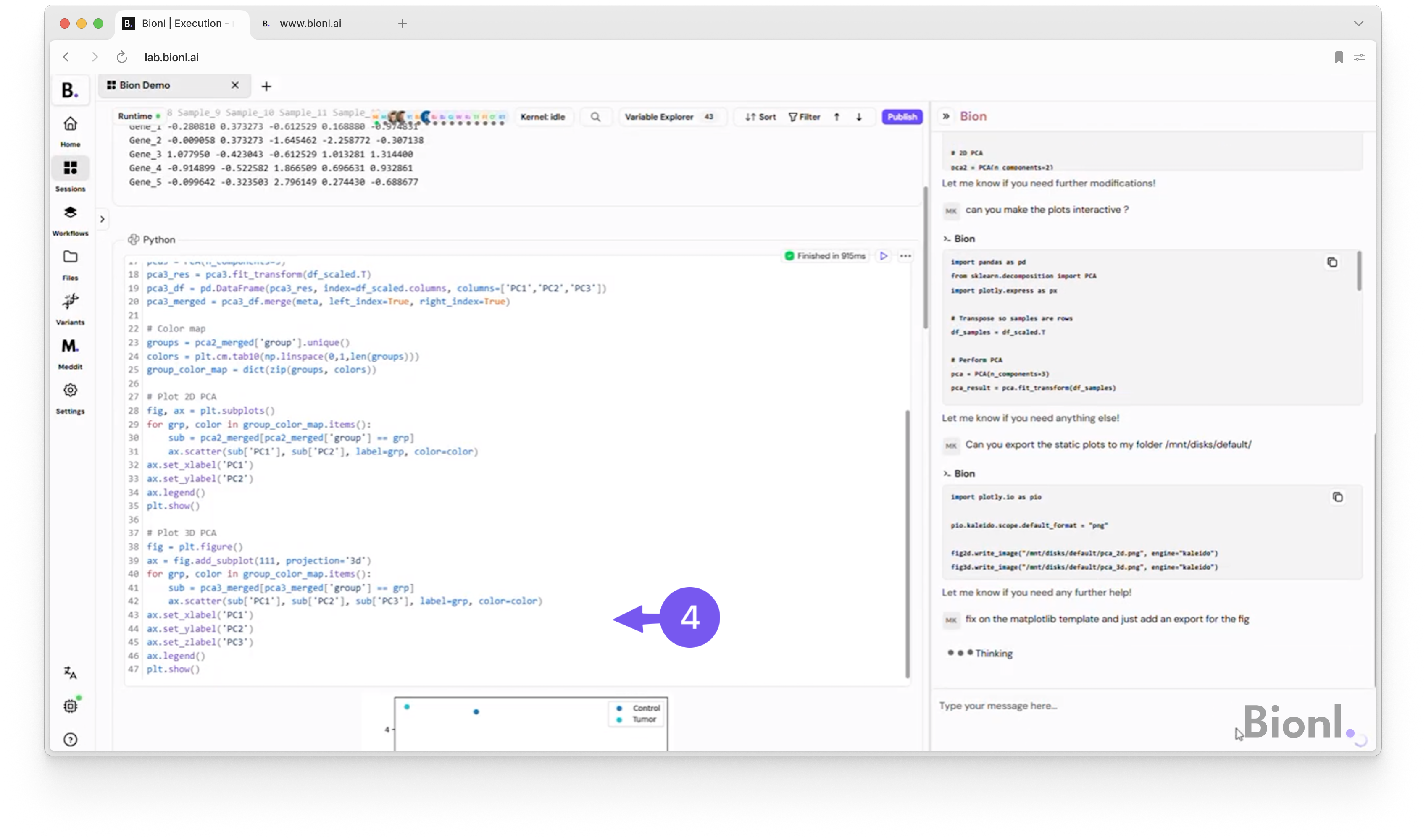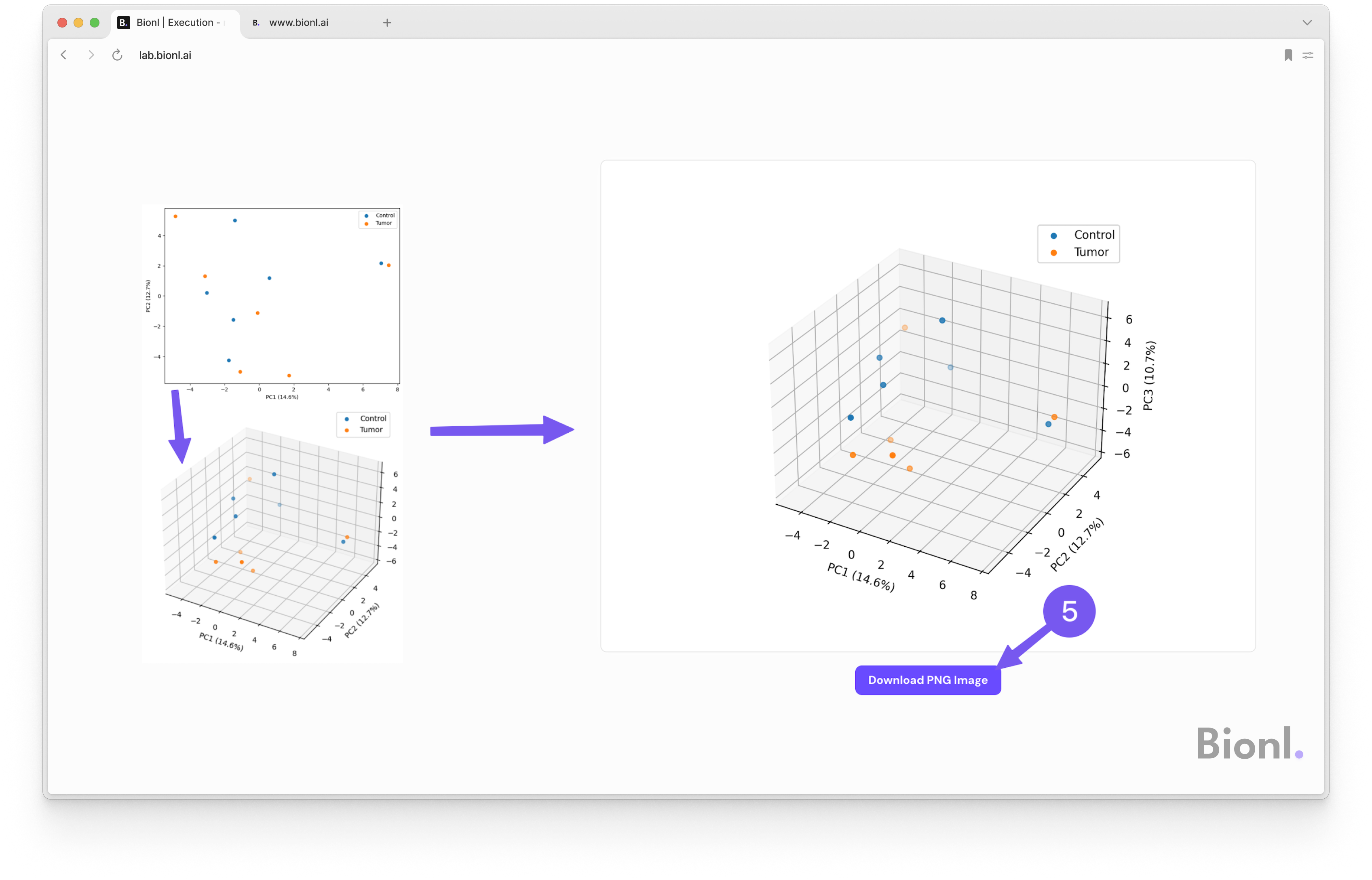Bion: Our Multi-Agent Biomedical System
August 4, 2025
·Layla Bitar

Imagine this scenario:
You’ve finally run your experiment. Weeks, or even months of work have led to this moment. You’ve gathered your data, and now it’s time to analyze it.
You open your favorite coding environment, import your dataset, start cleaning and exploring… when suddenly, you hit a bug.
You try fixing it, but it’s not that simple. You bounce back and forth with ChatGPT or Copilot, only to realize they’re taking you in circles; they don’t truly understand your data.
- Maybe you’re missing a library. Okay, fixed.
- Oh, now your plot throws an error. Fixed that too.
- Wait, why do your results look wrong? Back to debugging.
Hours (or days) vanish.
It doesn’t have to be this way.
If you want your life to be easier and your research to move faster, just use Bion.
Bion: Our Multi-Agent Biomedical System
Bion is an AI Agentic System that is integrated and based on Bionl’s bioinformatics notebook. It understands your data, writes and runs Python/R code, and delivers analyses and visualizations in real time.
In other words, it is your research co‑pilot — from raw data to discovery.
Key things that make it different:
- Understands your data context → Unlike generic AI tools, Bion works directly with the datasets you upload.
- Multi-agent architecture → The Orchestrator Agent coordinates specialized agents:
- Code Generator Agent → Writes reproducible scripts
- Filesystem Agent → Reads the file tree and metadata
- Backend Agent → Directly interacts with your notebook
- No-code + code flexibility → You can use natural language or write Python/R/Markdown directly in the same workspace.
- End-to-end workflow → Import → Clean → Analyze → Visualize → Iterate — all without leaving the notebook.
How to Use Bion
Step 1: Create a new session
Start by creating a new session and give it a name relevant to your project.

Step 2: Import data
Open the Bion Notebook and upload your dataset — whether it’s genomic sequences, patient health data, or experimental measurements.

Step 3: Talk to Bion like a colleague
Instead of writing long prompts or struggling with vague AI responses, you can simply chat with Bion.
Tell it what you want. See the example to the right side of the screen.
Bion’s Orchestrator Agent instantly understands your request and coordinates between specialized agents:
- Code Generator Agent writes clean, reproducible Python or R scripts
- Filesystem Agent stores and organizes your files
- Backend Agent is the middleman between your live notebook session and the code generator agent

Step 4: See results instantly
No more guessing if your code is correct; Bion writes it for you in real-time inside your notebook.
If something needs tweaking, you just ask.
It remembers the context of your dataset, so there’s no repetitive explaining.
See example below — we needed to fix the
matplotlib.

Step 5: Iterate & explore effortlessly
Want a scatter plot instead of a histogram?
Need a statistical test run?
Curious about correlations?
Just tell Bion.
It will adapt the code, rerun the analysis, and present updated results without breaking your workflow.
You can easily add an export button to save your graph as an image file.

With Bion, you can focus on what truly matters:
Asking better questions, exploring deeper, and accelerating discovery.
We built Bion because science should move at the speed of thought.
From the moment you upload your data to the instant you see your visualization, the gap between idea and insight is reduced to seconds.
Ready to work smarter?
The Orchestrator Agent is live in Bion today.
👉 Try it now at lab.bionl.ai and experience the future of bioinformatics.
Related Posts
- Literature Search
- Artificial Intelligence
Helpful or Harmful? How to Trust AI-Generated Summaries
AI summaries can support research and clinical work in several complementary ways. They can condense long and complex text into clear takeaways such as the primary endpoint, population size, and outcomes, giving readers a head start before committing to the full text.
Oct 2025
Layla Bitar
- Bioinformatics
Personalized Medicine and Bioinformatics: The Future of Healthcare
The future of healthcare lies in the convergence of personalized medicine and bioinformatics, as these rapidly advancing fields are set to revolutionize diagnostics, treatment, and disease prevention. Personalized medicine refers to a medical model that utilizes genetic, environmental, and lifestyle factors to create tailored healthcare plans for individual patients. Bioinformatics, on the other hand, is an interdisciplinary field that combines biology, computer science, and statistics to analyze and interpret complex biological data.
Apr 2023